|
In 1957, Stanley Kubrick shot scenes for his film Paths of Glory in Schloss Schleißheim.
|
|
Oberschleißheim, Freising, Dachau, Fürstenfeldbruck, Wolfratshausen, and Ammersee (Herrsching) are on the S-Bahn lines.
|
|
Schloss Schleißheim Maximilian
II Emanuel, the Elector, wanted to rival Versailles with the Neues
Schloss (New Palace). Begun in 1701 based on plans by Enrico Zuccalli
and completed in 1719 by Joseph Effner, the complex includes a hunting
lodge and Schloss Lustheim, a small summer palace on the eastern edge of
the Baroque park ,
also designed by Zuccalli. The latter houses an important collection of
early Meißner porcelain. Oberschleißheim is home to the Flugwerft
Schleißheim.

Neues Schloss, Schloss Schleißheim
Freising The
historic seat of a bishopric, the town is dominated by the cathedral
and the bishop’s residence, situated on a hill known as the Mons Doctus –
Learned Mount. Designed as a Roman basilica with five aisles, the
cathedral was completed in 1205 and embellished from 1723 to 1724 by the
Asam brothers, with stucco and stained-glass windows. Not to be missed
are the Romanesque crypt and its famous Bestiensäule, a column
elaborately carved with fabled beasts. Near the cathedral lies the
former Benedictine monastery, Weihenstephan. Today, it is a brewery –
arguably the oldest in the world – with a wonderful beer garden.
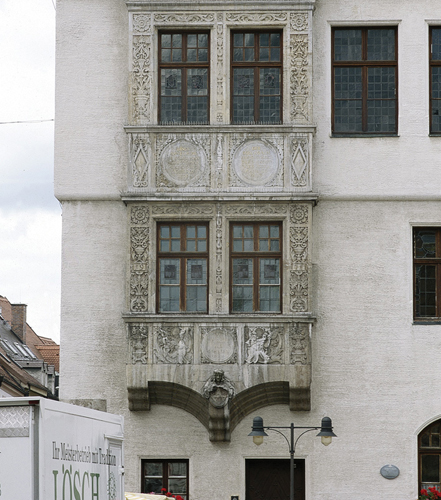
Dachau Set
in the foothills along the Amper River, some 15 km (9 miles) north of
Munich, Dachau is a small town built around a prominent palace – part
Renaissance, part Baroque – which has an excellent restaurant. In 1933,
the first Nazi concentration camp was set up here, now a place of
remembrance – the KZ Gedenkstätte – one of the most frequented in Europe
today. Refurbishment of the exhibition at the adjacent museum was
completed in 2003.
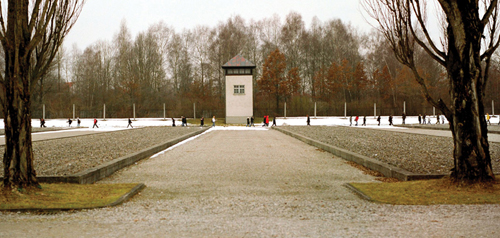
Dachau concentration camp
Herrmannsdorfer Landwerkstätten Near
Glonn, 30 km (19 miles) southeast of Munich, the Hermannsdorfer
Landwerkstätten complex was completed in 1986. The centre produces,
processes, and sells organic food products, and features a gourmet
restaurant and beer garden. Take the time for a walk to view works of
art such as chimes and sculptures placed throughout the grounds.
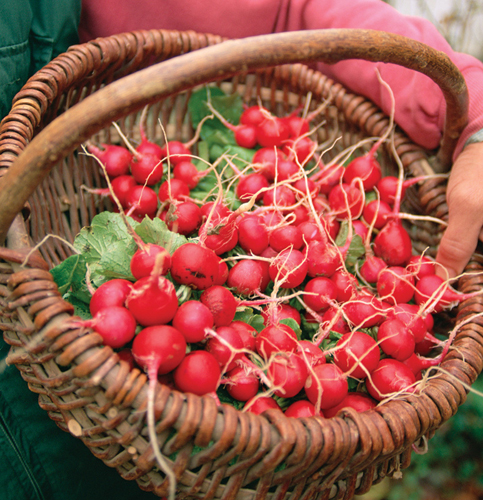
Kloster Andechs Situated
on the eastern shore of Ammersee on a hill rising to a height of 200 m
(650 ft), this monastery with its lovely Rococo church is one of the
most important pilgrimage sites in Germany. Many, however, journey here
to sample the famous monastery beer, served in the beer garden and pub.
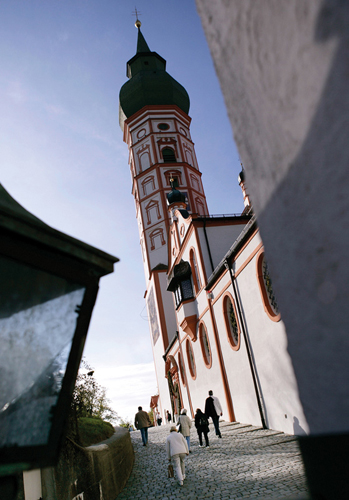
Fürstenfeldbruck Lining
its elongated town square, Fürstenfeldbruck boasts a town hall and
historic houses in the Baroque and neo-Classical style, and a Baroque
abbey by Antonio Viscardi. Its stunning interior includes work by the
Asam brothers, among others.
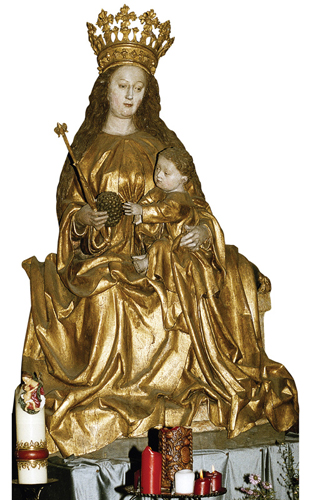
Gothic Madonna, Fürstenfeldbruck
Wolfratshausen & Rafting on the Isar Wolfratshausen
lies some 30 km (19 miles) south of Munich on the River Loisach and has
a long central market street flanked by 17th- to 18th-century Upper
Bavarian gabled town houses. This small town is the starting point for
river-rafting tours to Munich, which launch at the Loisach bridge. These
are cheerful excursions accompanied by music, picnics, and beer, down
the rafting chutes of the Isar to the central landing area near Tierpark
Hellabrunn. During the six-hour ride, passengers experience the largest
chute in Europe with an 18-m- (60-ft-) drop in altitude.
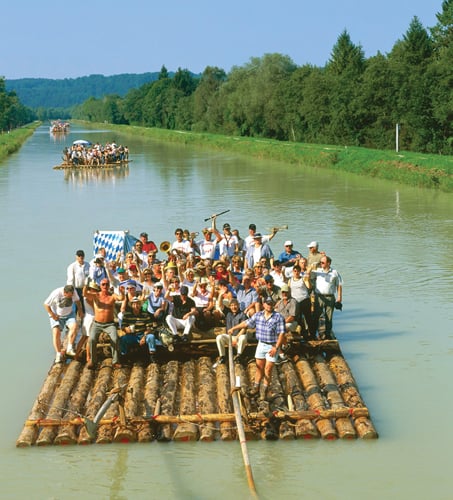
Ammersee Bavaria’s
third-largest lake, Ammersee lies in a glacial basin from the Ice Age
surrounded by forested moraines. Under clear skies, there is a glorious
view of the Alps. Its shoreline is studded with many small towns,
offering activities such as sailing, rowing, surfing, cycling, hiking,
and much more.
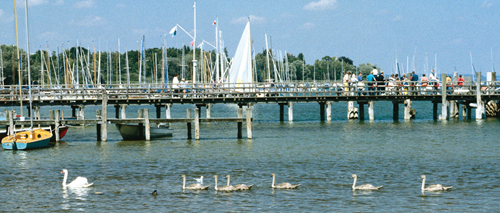
Ammersee
Osterseen South
of Lake Starnberg near Seeshaupt, travellers will find the delightful
Osterseen, a group of some 20 small moorland lakes that are among the
warmest in Bavaria. This is a perfect spot to go for swimming and
peaceful walks in a nature reserve.

Landsberg am Lech This
is a city straight out of a picture book. Lining the triangular market
square are beautiful town houses and a stunning stucco town hall. It was
built around 1700 by the famous building master Dominikus Zimmermann,
who also served as mayor of Landsberg (1749–54). The 36-m- (125-ft-)
high Bayertor, dating from around 1425, is one of the most impressive
medieval city gates in Bavaria.

Bayertor, Landsberg
|